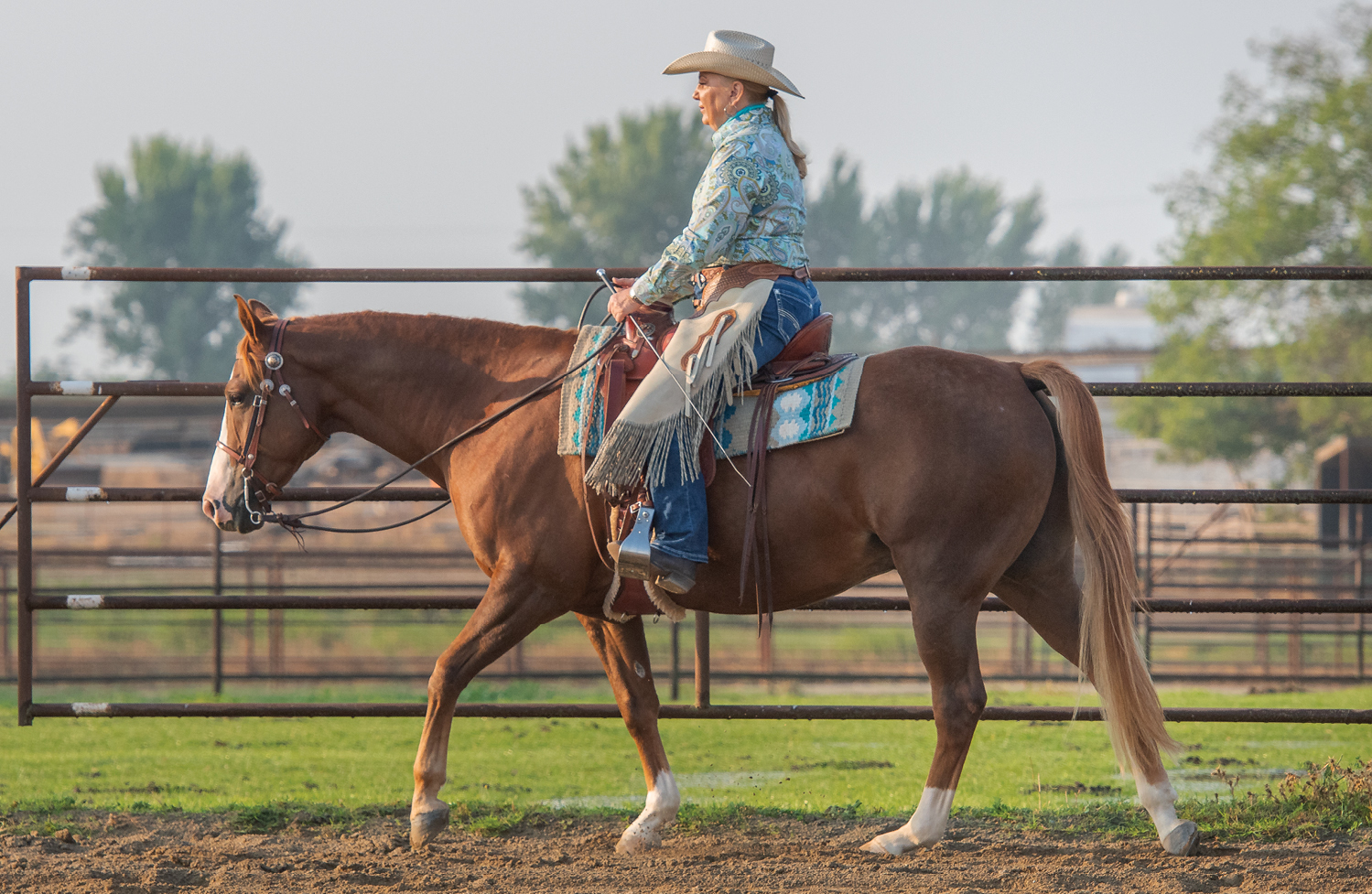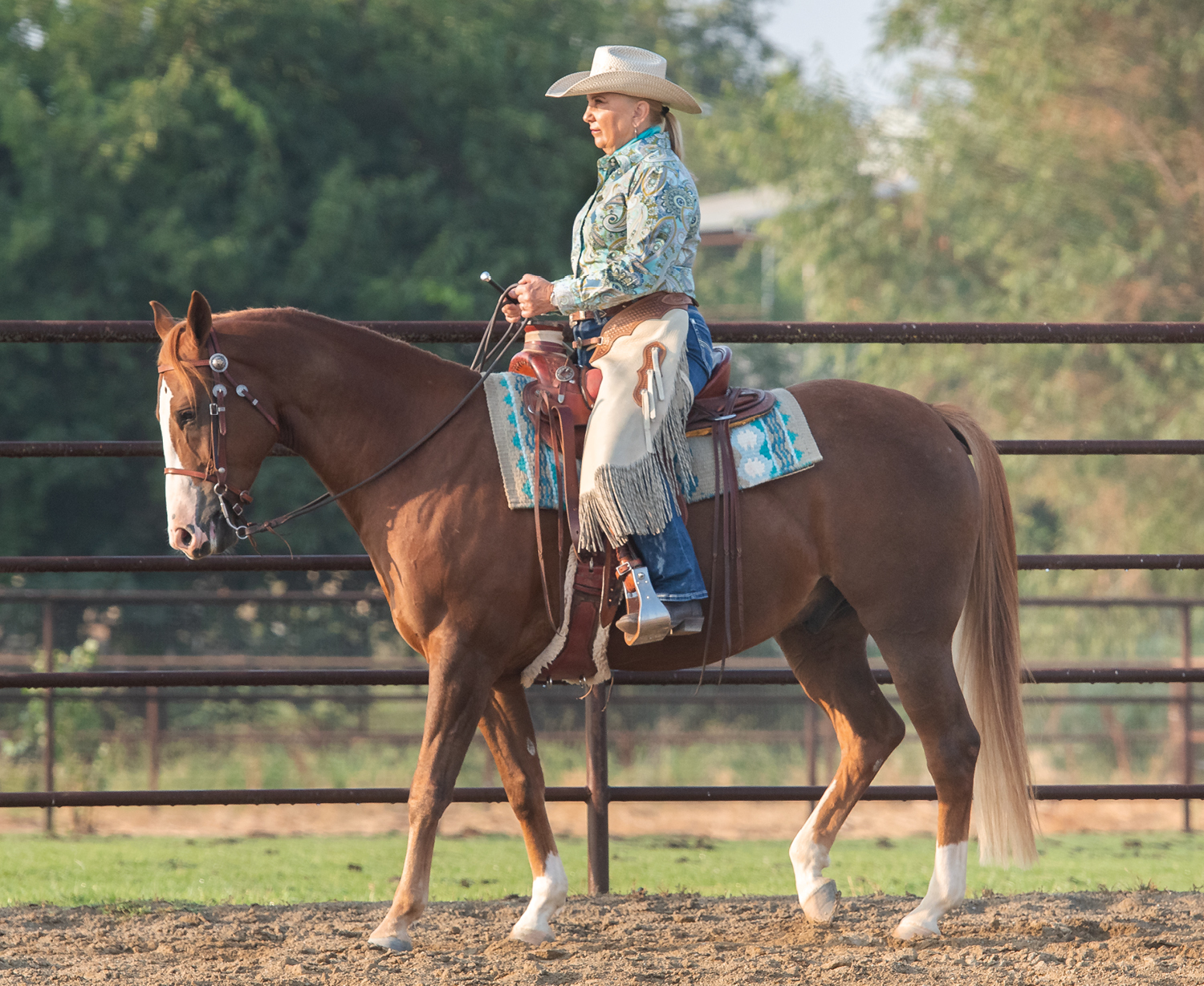I’m going to share a simple little exercise that can bring big benefits to you and your horse. I call it the “Old Man Walk” because it involves improving your horse’s balance by getting him to walk as slowly and deliberately as possible, alternating that with periods of extended walk or jog.
[MORE EXERCISES: LONGING BASICS]
I teach it in all my clinics because it’s a great starting point—you don’t have to be an accomplished rider to master it beautifully. It gets my students exploring their horses’ footfalls and paying close attention to their own cueing, and it has no negative side effects.
Sound interesting? Let’s look at why you might want to try such an unusual exercise to improve your horse’s walk.
Surprising Benefits
What the Old Man Walk can do for you, the rider:
• Awareness. The slow, focused nature of this exercise gives you time to notice each foot as your horse places it on the ground. By concentrating on getting your horse to go one step at a time, you become much more aware of how your horse actually moves.
• Cueing. You’ll learn to finesse the timing and application of your rein and leg cueing, because otherwise you won’t be able to get this super-slow walk—your horse will just stop, instead. You’ll feel how your hips can influence his movement, and eventually you’ll be able to use just your seat to get your horse to modify his walk.
What the Old Man Walk can do for your horse:
• Balance. Extreme slow-walking requires a higher degree of balance than walking at a normal speed. Many horses don’t distribute their weight equally over all four feet; they have a favorite diagonal pair, or they pull themselves forward on their forehand.
Slow-walking requires your horse to actively redistribute his balance with each step, rather than relying on his dominant diagonal or his forehand.
So with repeated practice, his overall balance improves.

• Impulsion. If your horse is lazy, he’ll actually become more forward as well as straighter and more balanced. If he’s already quite forward, this will teach him self-control and to “listen” to your seat to maintain a steady rhythm without rushing.
• Responsiveness. As you refine your cueing to accomplish this slow walk, you refine your horse’s responsiveness to those cues.
• Rehab option. As a bonus, if your horse is ever in need of rehabilitation after an injury, the Old Man Walk provides an ideal and safe starting point.
How to Do It
Start by warming your horse up for at least 10 minutes in a normal, forward walk. Then cue him with your reins and weight almost exactly as you would to ask him to stop, only just before he does stop, use your seat in a forward-pushing motion to say, “No, keep going, but slowly.”
Try to get several slow steps in a row, then increase the pushing motion of your hips to transition your horse to a more forward walk or even a jog. (Always provide plenty of transitions as you work on this exercise—never do the Old Man Walk for more than a dozen or so steps at a time.)
Producing this super-slow walk will be new for the both of you, so you’ll need to experiment to find what works best to prompt your horse to do it. Use trial and error. You mustn’t let him stop, but it should feel as if he’s going to stop every step.
In the beginning, you may need to reinforce your “keep-going” hip movement with a squeeze from your legs, but your goal is to get your horse listening to and responding to your seat alone. Similarly, as you progress over time, you’ll use your reins less and less to slow your horse down, relying more and more on your seat.
Your horse may feel almost “drunk” at first. When you ask him to go super-slow, he may weave or stagger sideways; this is normal. It’s because he’s not loading all his legs the same. He’s drifting toward his weaker leg, which typically under-drives.

With practice over time, your horse’s Old Man Walk will improve. When he can produce, on a straight line, a few sets of four, equal, super-slow steps, you’ll know he’s getting it and improving his balance.
Up to that point, how- ever, it may feel as if you’re sitting on a wavy line.
Again, be sure not to overdo the periods of slow walking. Always mix it up with transitions to an active walk or jog, then back to the slow walk. The transitions are a major part of the learning experience, plus they keep your horse from becoming overly focused on going slow.
[MORE: TELL RESISTANCE FROM DEFIANCE]
Practice it regularly over time, and you’ll improve not only your horse’s walk but also the partnership between the two of you.






